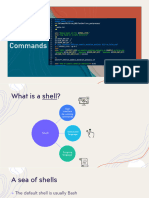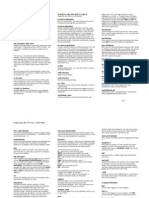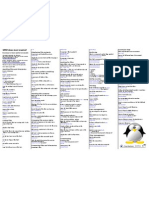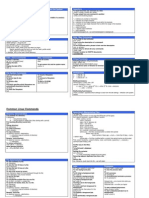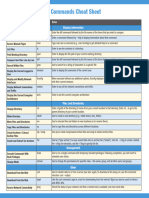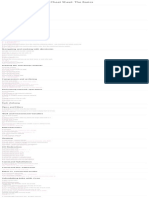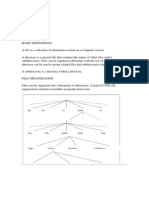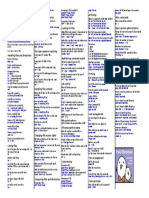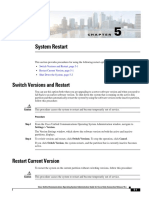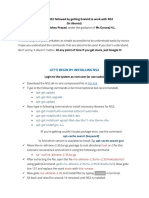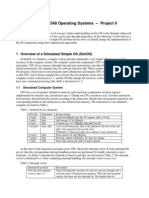0% found this document useful (0 votes)
18 views8 pagesModule-2 Cheat Sheet Introduction-To-Linux Commands
This document is a cheat sheet for Linux commands, covering various categories such as getting information, navigating directories, monitoring system performance, file management, working with permissions, displaying file contents, text wrangling, compression, archiving, and networking commands. It includes specific command syntax and examples for each category. The document also lists authors and contributors, along with a change log detailing updates made to the content.
Uploaded by
mehnazali2004Copyright
© © All Rights Reserved
We take content rights seriously. If you suspect this is your content, claim it here.
Available Formats
Download as PDF, TXT or read online on Scribd
0% found this document useful (0 votes)
18 views8 pagesModule-2 Cheat Sheet Introduction-To-Linux Commands
This document is a cheat sheet for Linux commands, covering various categories such as getting information, navigating directories, monitoring system performance, file management, working with permissions, displaying file contents, text wrangling, compression, archiving, and networking commands. It includes specific command syntax and examples for each category. The document also lists authors and contributors, along with a change log detailing updates made to the content.
Uploaded by
mehnazali2004Copyright
© © All Rights Reserved
We take content rights seriously. If you suspect this is your content, claim it here.
Available Formats
Download as PDF, TXT or read online on Scribd
/ 8




